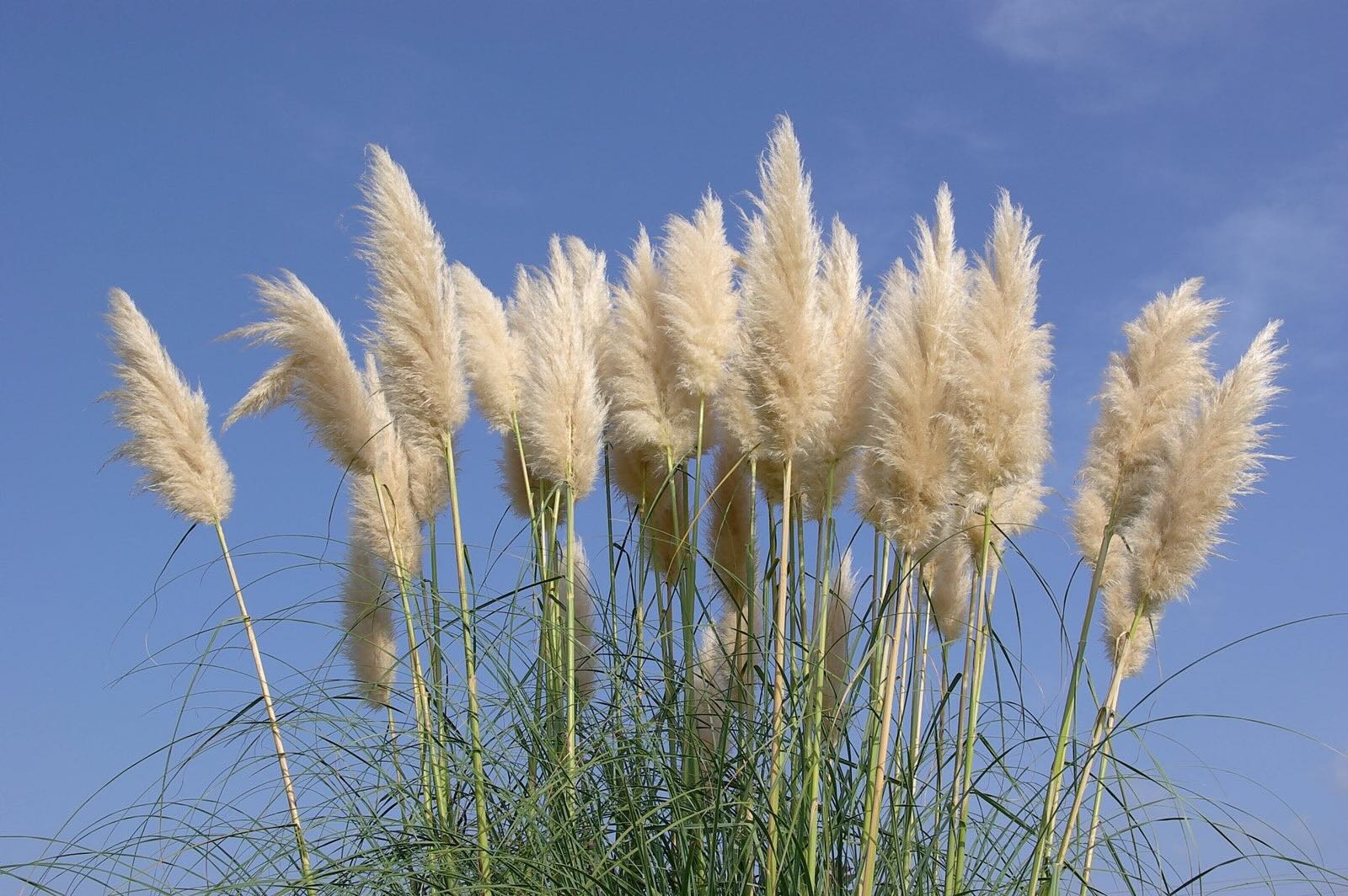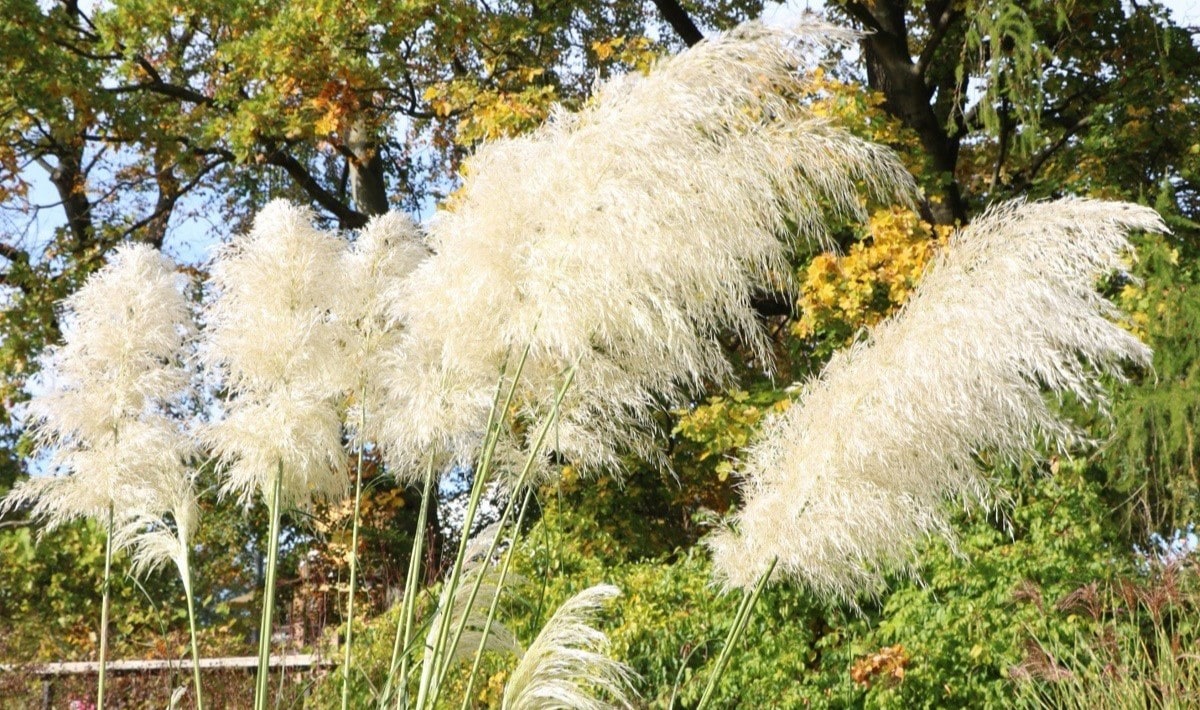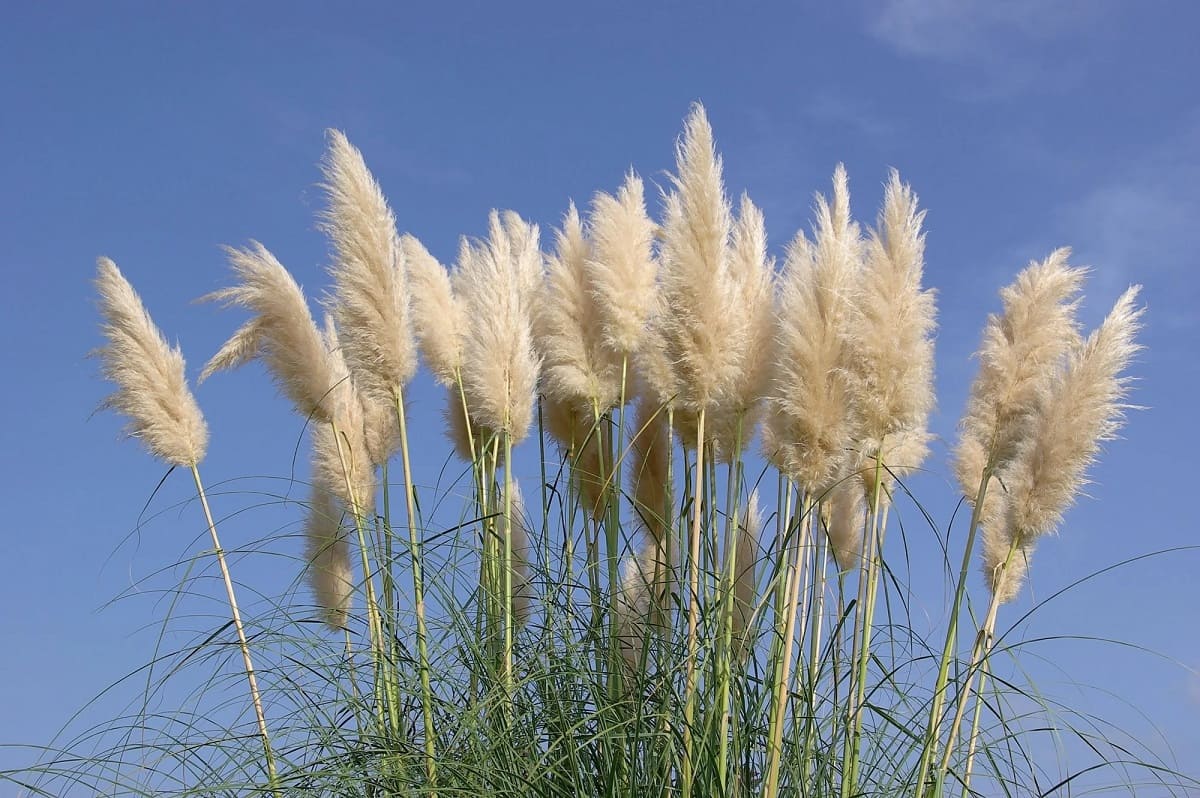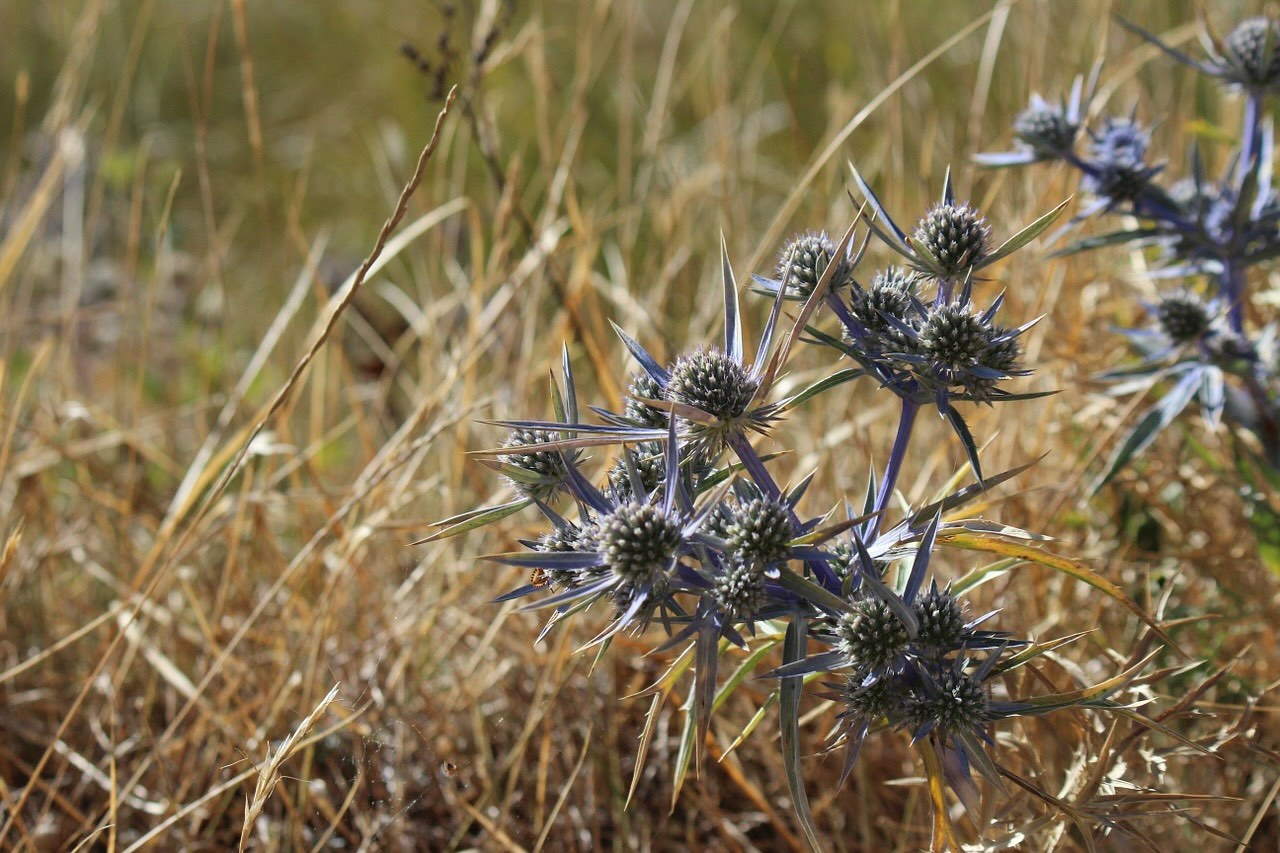Home>Gardening & Outdoor>Landscaping Ideas>How To Get Rid Of Pampas Grass Roots


Landscaping Ideas
How To Get Rid Of Pampas Grass Roots
Modified: August 16, 2024
Learn effective landscaping ideas to remove pampas grass roots. Discover step-by-step methods for eliminating roots and revitalizing your outdoor space. Explore expert tips for successful root removal.
(Many of the links in this article redirect to a specific reviewed product. Your purchase of these products through affiliate links helps to generate commission for Storables.com, at no extra cost. Learn more)
Introduction
Pampas grass, with its feathery plumes and towering fronds, is a stunning ornamental plant that can add a touch of elegance to any landscape. However, beneath its beauty lies a formidable challenge: its aggressive and resilient root system. Once established, pampas grass roots can spread vigorously, making it difficult to control and eradicate the plant. Whether you're looking to make room for new landscaping features or simply want to remove this invasive species, understanding how to effectively eliminate pampas grass roots is essential.
In this comprehensive guide, we will delve into the intricate world of pampas grass roots, equipping you with the knowledge and techniques needed to tackle this task with confidence. From the tools and materials required to the step-by-step process of root removal and prevention, you'll gain valuable insights that will empower you to reclaim your outdoor space from the clutches of this resilient plant.
So, roll up your sleeves and get ready to embark on a journey to reclaim your garden as we explore the ins and outs of getting rid of pampas grass roots. With the right approach and a touch of determination, you can restore balance to your landscape and pave the way for new possibilities. Let's dive in!
Key Takeaways:
- Removing pampas grass roots requires patience, the right tools, and careful disposal. By understanding the plant’s root system and following a methodical approach, you can successfully reclaim your outdoor space.
- After removing pampas grass roots, stay vigilant to prevent regrowth. Consider using a root barrier, monitoring the area, and exploring alternative landscaping options to maintain a thriving and pampas grass-free landscape.
Understanding Pampas Grass Roots
Before delving into the process of eliminating pampas grass roots, it’s crucial to grasp the nature of this plant’s underground network. Pampas grass (Cortaderia selloana) is renowned for its robust and extensive root system, which enables it to thrive in various soil conditions and climates. The roots of pampas grass are characterized by their tenacity and resilience, making them a formidable adversary for anyone seeking to remove the plant from their landscape.
The root system of pampas grass consists of both shallow and deep roots, with the shallow roots spreading laterally and the deep roots delving into the soil. This dual-root structure allows pampas grass to firmly anchor itself in the ground while also enabling it to propagate and expand rapidly. The rhizomes, or underground stems, further contribute to the plant’s ability to regenerate and proliferate, making it a persistent presence in the landscape.
Furthermore, the dense and fibrous nature of pampas grass roots poses a challenge when attempting to extract them from the soil. These roots intertwine and intertwine, forming a complex network that can be arduous to disentangle. Additionally, the sharp edges of the leaves can cause skin irritation, necessitating caution when handling the plant during the removal process.
By gaining a deeper understanding of the intricacies of pampas grass roots, you’ll be better prepared to tackle the task of eradication effectively. Armed with this knowledge, you can approach the root removal process with insight and foresight, increasing your chances of successfully eliminating this resilient plant from your landscape.
Tools and Materials Needed
Preparing to tackle the formidable task of removing pampas grass roots requires the right set of tools and materials. Equipping yourself with the following items will not only streamline the process but also ensure your safety and efficiency:
- Gardening Gloves: Protect your hands from the sharp edges of pampas grass leaves and potential skin irritations.
- Pruning Shears or Loppers: Essential for cutting through the thick and fibrous stems of the plant.
- Shovel: A sturdy shovel will aid in digging out the roots from the soil, especially the deep-seated ones.
- Trowel or Hand Fork: Useful for accessing and loosening the shallow roots nestled in the topsoil.
- Mattock or Pickaxe: Ideal for breaking up compacted soil and tackling stubborn, deep roots.
- Protective Eyewear: Safeguard your eyes from any debris or particles that may dislodge during the root removal process.
- Heavy-Duty Trash Bags or Tarp: For containing and disposing of the extracted roots and plant debris.
- Root Barrier (Optional): If you’re concerned about potential regrowth, a root barrier can be employed to prevent the spread of any remaining rhizomes.
- Herbicide (Optional): In cases where manual removal may not be feasible, an herbicide specifically formulated for grasses can be used as a supplementary measure.
Before commencing the root removal process, ensure that you have all the necessary tools and materials at your disposal. Additionally, wearing appropriate attire, including long sleeves, pants, and closed-toe shoes, will provide an extra layer of protection as you confront the challenge of eliminating pampas grass roots from your landscape.
With the right tools and a proactive mindset, you’ll be well-prepared to embark on the journey of reclaiming your outdoor space from the persistent grip of pampas grass.
Step 1: Preparing the Area
Before diving into the physical removal of pampas grass roots, it’s essential to prepare the surrounding area to facilitate a smooth and efficient process. Taking the time to prepare the site will not only enhance safety but also contribute to the thoroughness of the root removal endeavor.
Here’s how to prepare the area:
- Clear the Surrounding Space: Remove any obstacles, such as rocks, debris, or other plants, from the vicinity of the pampas grass. Creating a clear and unobstructed workspace will enable unrestricted movement and access during the root removal process.
- Secure Protective Gear: Don sturdy gardening gloves, protective eyewear, and appropriate attire to shield yourself from potential skin irritation and debris dislodgement.
- Assess the Soil Moisture: Ideally, the soil should be moderately moist to facilitate easier root extraction. If the soil is excessively dry, consider watering the area a day before the scheduled removal to loosen the soil.
- Notify Household Members: If you’re using any herbicides as part of the removal process, inform household members and neighbors to ensure awareness and safety precautions.
- Prepare Disposal Containers: Set up heavy-duty trash bags or a tarp to contain the extracted roots and plant debris, simplifying the disposal process.
By meticulously preparing the area before commencing the root removal process, you’ll set the stage for a methodical and well-executed endeavor. This proactive approach not only enhances safety and efficiency but also lays the groundwork for a successful pampas grass root elimination operation.
With the area primed and ready, you’re now poised to embark on the next crucial phase: the physical extraction of pampas grass roots from the soil.
To get rid of pampas grass roots, dig around the base of the plant to expose the roots. Use a shovel to carefully remove the roots, making sure to get as much of the root system as possible. Dispose of the roots in a sealed bag to prevent regrowth.
Step 2: Digging Out the Roots
With the area prepared and your protective gear in place, it’s time to delve into the intricate process of digging out the resilient roots of pampas grass. This step requires patience, precision, and a methodical approach to ensure thorough root removal and minimize the potential for regrowth.
Follow these steps to effectively dig out the roots:
- Identify the Root Spread: Begin by assessing the extent of the root system. Pampas grass roots can extend widely, so carefully trace the perimeter of the plant to gauge the reach of the roots.
- Start with Shallow Roots: Using a trowel or hand fork, gently loosen the topsoil around the base of the plant to expose the shallow roots. Gradually work your way around the perimeter, loosening the soil and disentangling the shallow roots from the surrounding earth.
- Tackle the Deep Roots: Employ a sturdy shovel to dig around the base of the plant, aiming to excavate the deeper roots. As you delve into the soil, exercise caution to avoid damaging the roots and to maintain their integrity for thorough removal.
- Break Up Soil Clumps: In areas with compacted soil or where the roots have firmly entrenched themselves, use a mattock or pickaxe to break up the soil and expose the deeper roots. This process can be labor-intensive but is crucial for accessing and extracting the resilient roots.
- Remove the Roots Methodically: As you unearth the roots, carefully follow their path and disentangle them from the soil. Use pruning shears or loppers to cut through any thick or stubborn roots, ensuring that they are completely severed from the plant.
Throughout the root excavation process, maintain a keen eye for any interconnected rhizomes, ensuring that no remnants are left behind to facilitate regrowth. By methodically and patiently digging out the roots, you’ll lay the groundwork for a comprehensive eradication of pampas grass from your landscape.
As you extract the tenacious roots from the soil, you’re one step closer to reclaiming your outdoor space and curbing the relentless expansion of pampas grass in your garden.
Read more: How Big Does Pampas Grass Get
Step 3: Disposing of the Roots
Once the arduous task of extracting pampas grass roots from the soil is complete, the next crucial phase involves the safe and responsible disposal of the removed roots and plant debris. Proper disposal is essential to prevent any potential reestablishment of the plant and to minimize the risk of environmental impact.
Follow these steps to ensure proper disposal of the extracted roots:
- Contain the Roots and Debris: Gather the extracted roots and any accompanying plant material, such as leaves and stems, and place them in heavy-duty trash bags or on a tarp. Ensuring containment prevents the spread of seeds and rhizomes, mitigating the risk of regrowth.
- Seal the Disposal Containers: Once the roots and debris are securely contained, seal the trash bags or tarp to prevent any potential dispersal of seeds or rhizomes during transportation and disposal.
- Transport to a Designated Facility: Dispose of the extracted roots and plant material at a designated green waste facility or a location specified for organic debris disposal. Be mindful of local regulations and guidelines regarding green waste disposal to ensure compliance.
- Consider Composting (Optional): If permitted and suitable, the extracted roots and plant material can be composted in a designated composting area. However, exercise caution and avoid composting any parts that may contain viable seeds or rhizomes to prevent inadvertent regrowth.
- Clean and Sanitize Tools: After completing the disposal process, thoroughly clean and sanitize the tools used for root removal to prevent the potential spread of any residual seeds or rhizomes to other areas of your landscape.
By meticulously adhering to proper disposal practices, you can significantly reduce the likelihood of pampas grass regrowth and contribute to maintaining a balanced and thriving ecosystem in your garden.
With the roots safely contained and responsibly disposed of, you’ve taken a pivotal step toward reclaiming your outdoor space from the persistent clutches of pampas grass.
Step 4: Preventing Regrowth
Having successfully removed the resilient roots of pampas grass from your landscape, it’s essential to implement preventive measures to curb any potential regrowth and ensure long-term eradication of the plant. By proactively addressing regrowth, you can safeguard your outdoor space and prevent the resurgence of pampas grass in your garden.
Follow these proactive steps to prevent regrowth:
- Monitor the Area: Regularly inspect the cleared area for any signs of new growth, including emerging shoots or regenerating rhizomes. Promptly addressing any regrowth at its early stages can prevent the plant from reestablishing itself.
- Install a Root Barrier: Consider installing a root barrier around the perimeter of the cleared area to impede the spread of any remaining rhizomes. A physical barrier can help contain the underground growth of pampas grass roots and prevent their encroachment into the treated space.
- Apply Herbicide (Optional): If regrowth persists or if you encounter new shoots, consider using an herbicide specifically formulated for grasses. Follow the manufacturer’s instructions and apply the herbicide selectively to target the regenerating pampas grass, exercising caution to avoid affecting desirable plants.
- Maintain Vigilance: Stay vigilant and proactive in monitoring the area over an extended period, as pampas grass can exhibit persistent regrowth tendencies. Consistent oversight and timely intervention can thwart any attempts at resurgence.
- Consider Alternative Landscaping: To minimize the risk of pampas grass reinfestation, explore alternative landscaping options for the cleared area. Introducing native plants or creating a new garden design can transform the space while reducing the likelihood of pampas grass regrowth.
By implementing these preventive measures, you can fortify your efforts in eradicating pampas grass from your landscape and create a resilient barrier against any potential regrowth.
With a proactive approach to preventing regrowth, you’re poised to maintain the integrity of your outdoor space and cultivate a thriving landscape that remains free from the encroachment of pampas grass.
Conclusion
Congratulations on successfully navigating the intricate process of eliminating pampas grass roots from your landscape. By understanding the nature of pampas grass roots, equipping yourself with the right tools, and following a methodical approach to root removal, you’ve taken a significant step toward reclaiming your outdoor space from this resilient plant.
As you reflect on your journey to eradicate pampas grass roots, it’s important to acknowledge the dedication and perseverance you’ve demonstrated throughout the process. Tackling the challenge of pampas grass root removal required a blend of patience, precision, and proactive measures, all of which have contributed to your success in curbing the plant’s relentless expansion.
Furthermore, by prioritizing responsible disposal practices and implementing preventive measures to thwart regrowth, you’ve fortified your landscape against the potential resurgence of pampas grass. Your commitment to maintaining the integrity of your outdoor environment and fostering a thriving ecosystem is commendable and sets the stage for a vibrant and sustainable landscape.
As you gaze upon the cleared expanse that was once dominated by pampas grass, envision the possibilities that lie ahead. Whether you choose to introduce new landscaping features, nurture native flora, or simply revel in the newfound sense of space, your efforts have paved the way for a revitalized outdoor sanctuary.
By embarking on this journey, you’ve not only reclaimed your garden but also gained invaluable insights into the intricate world of pampas grass roots. Your newfound knowledge and hands-on experience equip you to guide others on a similar path and inspire them to overcome the challenges posed by resilient plant species.
As you savor the fruits of your labor, take pride in the transformative impact you’ve made on your landscape. Your determination and stewardship have reshaped the outdoor canvas, setting the stage for a vibrant and flourishing environment that reflects your unwavering commitment to nurturing and preserving the natural world.
With pampas grass roots successfully eradicated and your outdoor space rejuvenated, you’ve embarked on a journey of transformation and stewardship that will continue to inspire and resonate with fellow enthusiasts and environmental stewards alike. Your dedication to reclaiming your landscape serves as a testament to the profound impact of hands-on stewardship and the enduring rewards of nurturing a thriving outdoor sanctuary.
Frequently Asked Questions about How To Get Rid Of Pampas Grass Roots
Was this page helpful?
At Storables.com, we guarantee accurate and reliable information. Our content, validated by Expert Board Contributors, is crafted following stringent Editorial Policies. We're committed to providing you with well-researched, expert-backed insights for all your informational needs.















0 thoughts on “How To Get Rid Of Pampas Grass Roots”